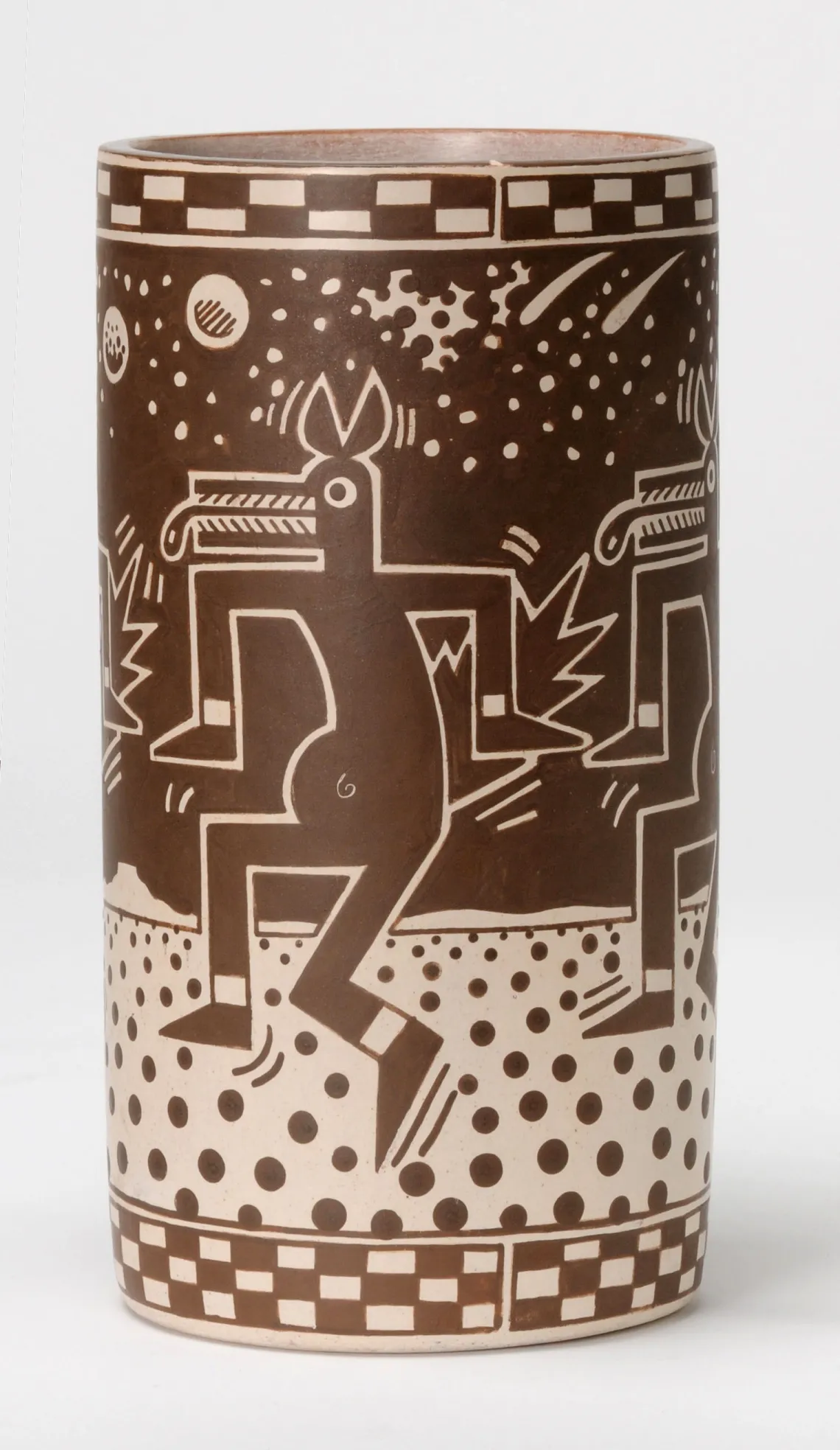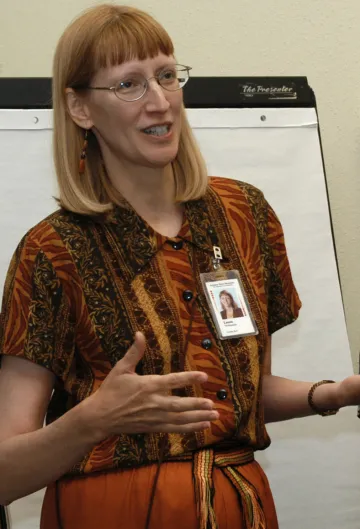
"Hot" Chocolate Cylinder Jar
2009
Diego Romero
Night Falling
Chaco-inspired Cylinder Jar
Cochiti Pueblo, New Mexico
Ceramic: native clay and native paint
Height: 8.5 in. (21.7 cm.), Diameter: 4.5 in. (11.4 cm.)
Purchase by the Friends of the ASM Collections, 2009
(ASM Catalog No. 2009-839-1)
Today, even though chocolate is quite common everywhere, it is still considered a very special substance, both representing and regarded with passion. To the prehistoric people of Chaco Canyon it would have been considerably more significant, since it would have come from far away in limited quantities. It almost certainly would have been exchanged for something very valuable. Its presence in the rare cylinder jars suggests it was used in ritual. And although it may have been available only to certain classes of people, there is some evidence that even relatively ordinary forms of pottery once held chocolate. Studies are still going on and ASM is playing a role, having recently released pottery sherds from our collection to undergo tests for chocolate residue.
Getting back to this modern piece, I chose it because I am pleased that museum collections are a source of inspiration and can give Native artists a reference point to speak to their own history and experience. On this jar, Romero refers to the prehistoric use of chocolate with his choice of brown paint—Chacoan jars are decorated with black, never with brown.
The designs on Romero’s piece barely recall those on the prehistoric vessels; instead, we see coyotes dancing around the jar. Overhead is a night sky teeming with not just stars but, Romero has pointed out, “flying saucers, the Milky Way, and the Taurus Nebula from Star Trek.” He admits to being intrigued by the idea of Mayan astronauts à la “Chariots of the Gods,” but I wonder if the celestial designs may also be poking a bit of fun at the near-obsession some people have with the astronomical features of Chacoan ruins.
The coyotes, Romero says, are “having a big old party.” Coyote is a trickster though. Could there be a hint that Coyote has tricked modern scientists into believing cylinder jars once held chocolate? I hope not, and that these coyotes ARE just having fun, enjoying the pleasant feelings we still associate with chocolate.
Thanks to Diane Dittemore and Patrick Lyons for their assistance in researching this jar.
Links
Diego Romero
A Time of Visions - Interview with Diego Romero BriteSites.com ca. 1996
The Pottery-Comics Connection Newspaper Rock 2006
Diego Romero Gallery / Artist Statement RobertNicholsGallery.com
Diego Romero Pottery Jesse Lu’s (Mud)Bucket blog 2009
Dough Bowl Metropolitan Museum of Art
Prehistoric Cylinder Jars and Evidence of Chocolate
Images from the National Museum of the American Indian:
Twelve cylinder jars from Pueblo Bonito
Chaco Canyon and Archaeoastronomy
Ancient Observatories: Chaco Canyon Exploratorium ca. 2004
Traditions of the Sun: Chaco Culture National Historical Park 2005
Ancient Pueblo Peoples New World Encyclopedia
References
Diego Romero
Clark, Garth
- 2006 Free Spirit: The New Native American Potter. Hertogenbosch, Netherlands.
Schaaf, Gregory
- 2002Southern Pueblo Pottery: 2,000 Artist Biographies. CIAC Press. Santa Fe, NM
Prehistoric Cylinder Jars and Evidence of Chocolate
Crown, Patricia L. and W. Jeffrey Hurst
- 2009Evidence of Cacao Use in the Prehispanic American Southwest. Proceedings of the National Academy of Science USA 106:2110-2113.
Crown, Patricia L. and Wirt H. Wills
- 2003Renovating Pottery and Kivas at Chaco: Pentimento, Restoration or Renewal? American Antiquity 68:511-532.
Washburn, Dorothy K., William N. Washburn and Petia A. Shipkova
- 2011The Prehistoric Drug Trade: Widespread Consumption of Cacao in Ancestral Pueblo and Hohokam Communities in the American Southwest. Journal of Archaeological Science 38:1634-1640.






